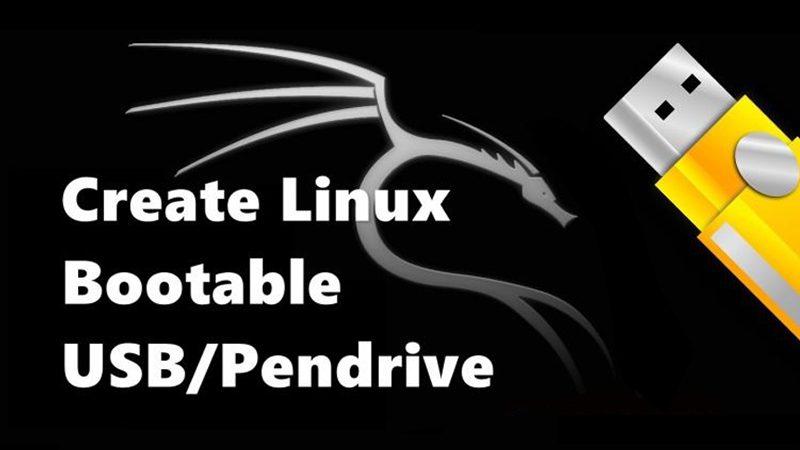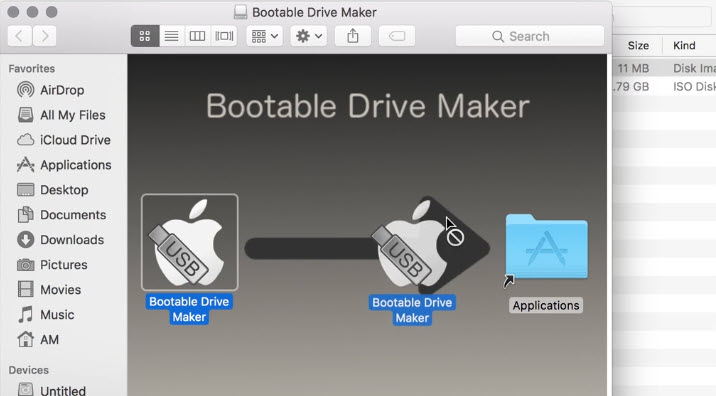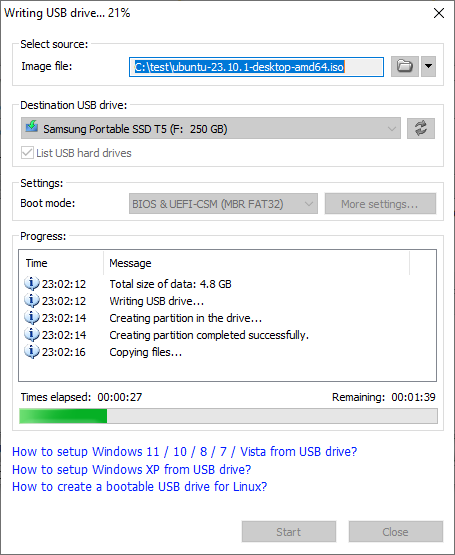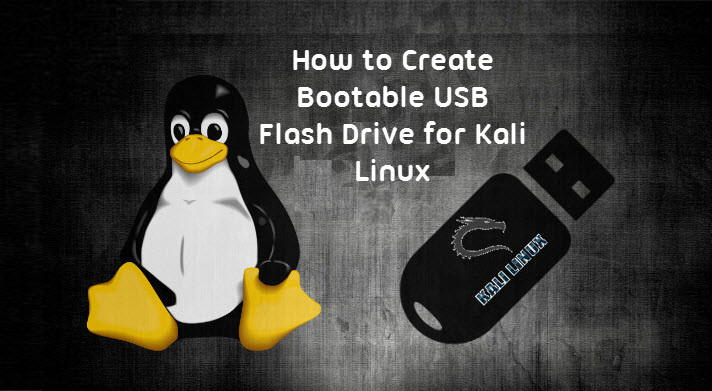

- Create a bootable usb with kali linux for mac mac os x#
- Create a bootable usb with kali linux for mac install#
- Create a bootable usb with kali linux for mac pro#
- Create a bootable usb with kali linux for mac Pc#
- Create a bootable usb with kali linux for mac iso#
The process of installing Kali Linux on USB will be the same for other Linux operating systems as well such as Ubuntu, CentOS, Linux Mint, etc.
Create a bootable usb with kali linux for mac install#
Install Kali Linux on USB Drive to create portable Linux OS
Create a bootable usb with kali linux for mac Pc#
Create a bootable usb with kali linux for mac pro#
If you have a mid 2012 Macbook Pro onwards, they are fine to use. Had a lot of issues with it when I owned one. Note: This won't work with old Mac models, such as mid 2007 since they don't support legacy boot.

Click it, and it should boot in no problem. It's easy to single out, if you have trouble with that you can unplug then plug it in on the boot screen and it will pop up for you so you know which one it is. The icon should be orange with a USB icon on top of it.
Create a bootable usb with kali linux for mac iso#
This is good, it means that the ISO was successfully placed onto the USB drive.ĩ) - Restart your Mac and when you see the Apple logo on the boot screen, hold the ALT key straight away and it will take you to a boot menu. This can take up to an hour depending on write speeds and other variables but be VERY patient with this just incase.Īfter it is done, you will recieve an output like this in the terminal: 2911+1 records inģ053371392 bytes transferred in 2151.132182 secs (1419425 bytes/sec) Sudo dd if=~/Desktop/Linux_Folder/ of=/dev/disk6 bs=1mĪfter it is initiated, nothing will print on the terminal but this is good because it's writing the ISO file of Kali into the USB successfully. Sudo dd if=/location/to/kali.iso of=/dev/disk(USB number) bs=1m NOTICE: This next step will erase your USB drive so make sure there is nothing on it that you want or need or it's a fresh drive.Ĩ) - After it is unmounted, I assume it's safe to proceed, type: If you feel it is too cluttered in the terminal type clear to clear it then run through the step again.Ħ) - You'll find that an extra disk is listed and that is your USB Drive, it should have the volume name for the drive listed there too so it will be easily recognisable.ħ) - After you have recognised which disk is listed under the USB type this into the terminal diskutil unmount /dev/disk(USB number) without the brackets. Just remember that these are your drives you don't want to touch since they are for your main OS which is OS X.ĥ) - Plug in your usb device, then this time again type diskutil list. Note: /dev/disk(disknumber) may or may not be different for you. The output should look similar to this: /dev/disk0Ģ: Apple_HFS Macintosh HD 74.4 Gi disk0s3ġ: Apple_partition_scheme 625.3 Mi disk1s1ģ: Apple_HFS Dungeon Siege Disc 2 625.0 Mi disk1s1s2 The terminal should now be open.Ĥ) - In your Terminal, type diskutil list, don't have your USB plugged in yet to again, avoid confusion.

Ideally, put it into it's own folder.Ģ) - Have a USB drive ready, minimum 4GB but I highly recommend an 8GB+ USB but 4GB should be fine.ģ) - On your Mac, open Terminal by searching for it or by pressing CMD + SPACE and typing terminal then enter. Hopefully I answered your questions, so let's proceed to putting Kali onto a USB:ġ) - Download the relative Kali Linux image on their site here: - save it somewhere easily accessible without a lot of files to avoid any confusion when we place the Kali ISO image onto the USB. See here for more information about that.

But again, you have to intentionally set that up. The persistent data is stored in its own partition on the USB driveĮssentially acting as a hard drive, just on a USB. When running Kali Linux “Live” from the USB drive, even across different systems. However, you can create something called Live USB with Persistence which enables the capability of data preservation like any other OS. When you remove the USB after shut down, assuming you haven't installed Kali Linux onto the hard drive and just booted live, you will boot back into the normal OS as per normal.
Create a bootable usb with kali linux for mac mac os x#
Kali won't physically nor permanently be installed to your main hard drive where the Mac OS X sits unless you intentionally install Kali Linux onto that drive meaning it will overwrite everything and install if you so please to do so. Meaning that everytime you plug this into a computer and boot from USB it can run the operating system from the computer instantly but nothing is saved, everytime you exit the live boot everything resets to how it was in the first place.Įvery time you plug it in it switches to kali linux and when you unplug it it switches back to OS X? Or is the kali linux permanently on the computer/laptop Technically, yes, because it's a live USB. Luckily for you, OS X is similar to Linux due to them both running UNIX so it will make this process a lot quicker.īefore I proceed into writing the steps onto putting Kali on a USB drive - I will answer your questions.


 0 kommentar(er)
0 kommentar(er)
